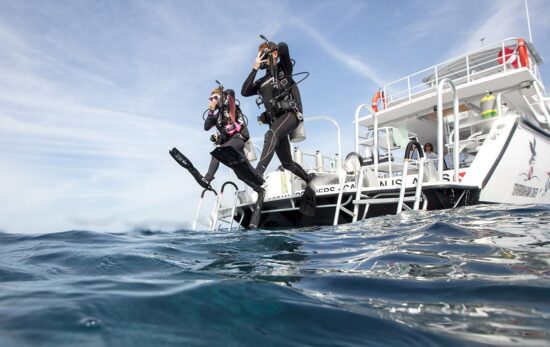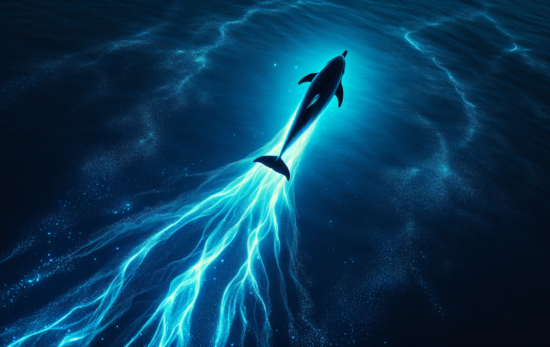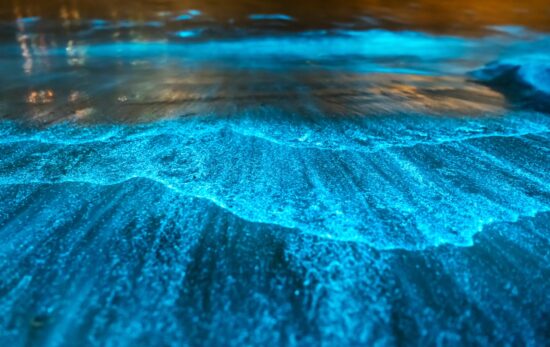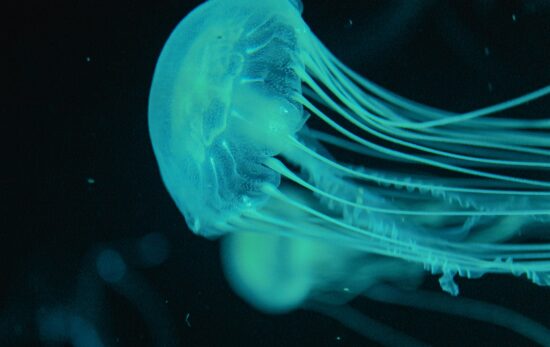For divers and photographers some of the best dives are the ones with the most colors. Whether its colors from the corals or from the fish and other marine life, color definitely makes for an awesome dive.
If you like color when you’re underwater then you absolutely need to try fluoro diving. Never heard of it? Think of an underwater 1970’s disco scene and you are getting close! Read on to find out more…
What Is Bioluminescence?
Bioluminescence is light produced by a chemical reaction within a living organism. If you’ve ever seen a firefly, then you’ve seen a form of bioluminescence While you might not have seen it when diving, most bioluminescent organisms are found in the ocean. These bioluminescent marine species include fish, bacteria, jellies and plankton. Have you ever returned from a night dive and the water behind the boat has illuminated? That’s also bioluminescence. At the end of a night dive, try turned of your torch light and agitating the water in front of you with your hands – you’ll often see small particles light up in front of your eyes!

What Is Fluorescence?
Fluorescence is different to bioluminescence as it is not emitted from the organism by itself and cannot be seen by the naked eye. To see fluorescence requires diving with an underwater UV light or blue light and wearing an amber eye shield or filter over your mask (also known as ‘Fluoro Diving’). The eye shield is necessary to see the incredible effects of the blue light.
How Does Fluorescence Work?
Some marine organisms produce proteins that are capable of generating fluorescence when they absorb blue light. The proteins absorb the photon of the blue light which results in an increased energy level, the increased energy is used to emit a photon of light in return with a longer wave length. This longer wave is fluorescence and it is usually visible as fluorescent (almost neon) reds, oranges, pinks, blues or greens depending on the individual protein affected. Not all marine organisms react in this way but when you find one that does, you will definitely see it!

Highlights of Fluoro Diving
Corals are amongst the best reactors to blue lights and unveil a myriad of details which aren’t usually seen with the naked eye. Crustaceans hiding in the reef will stand out equally brightly, like gaudy baubles on an already overdressed Christmas tree. Nudibranchs, cephalopods, worms, clams and jelly fish all react well to blue light too. Some fish will react and others won’t. For nocturnal species, that would normally shrink away from regular torch light, they won’t be startled by a blue light, allowing for some phenomenal close encounters and photography opportunities.
Special Requirements of Fluoro Diving
Experience: It’s recommended that you have a few regular night dives under your belt before you try fluoro diving. If you haven’t made any night dives yet, you can gain experience by taking the PADI Advanced Open Water Diver course, or the PADI Night Diver Specialty course. During these programs you’ll learn essential night diving skills that also apply to fluoro diving.
Equipment: As well as a blue or UV light and amber mask filter, it’s recommended to take a regular night diving torch and back up with you for making the initial descent and in case of emergencies. It’s preferable to start the dive with a regular light rather than plunging straight into the darkness.
If you plan to try and capture underwater images, a translucent amber sticker placed over the lens port on your housing will enable you to capture the colors. You’ll need a strong UV light for this and remember to keep your flash and strobes off. Macro shots are relatively easy to capture but wide angle is not recommended as the blue lights aren’t usually capable of illuminating a large area.
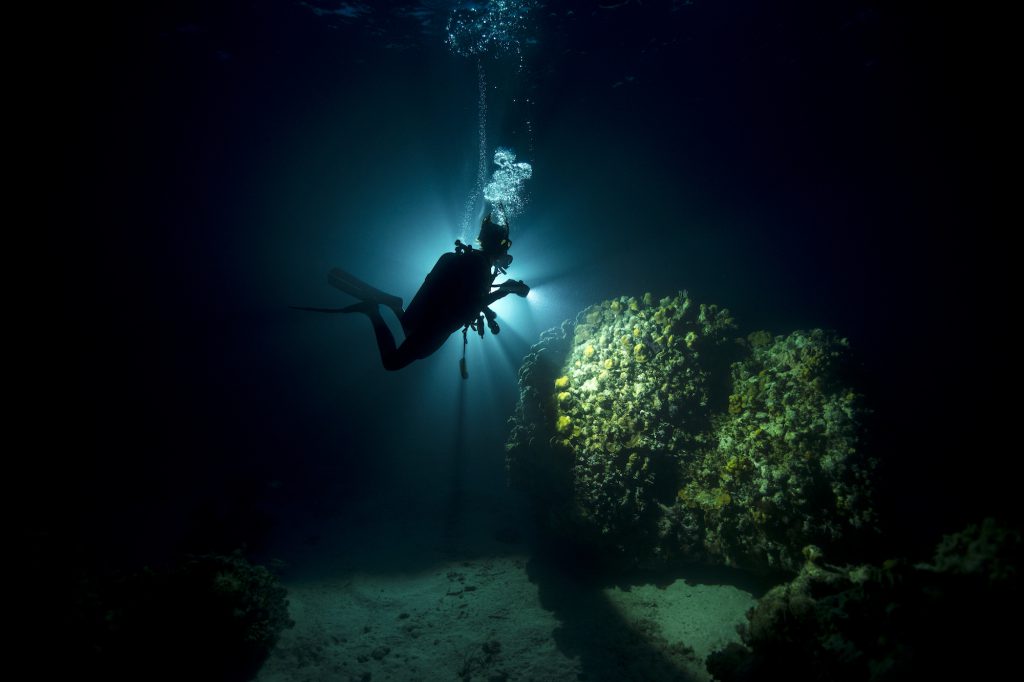
Are you ready to try fluoro diving? Learn more about the PADI Night Diver Specialty course and locate a PADI dive shop near you.


